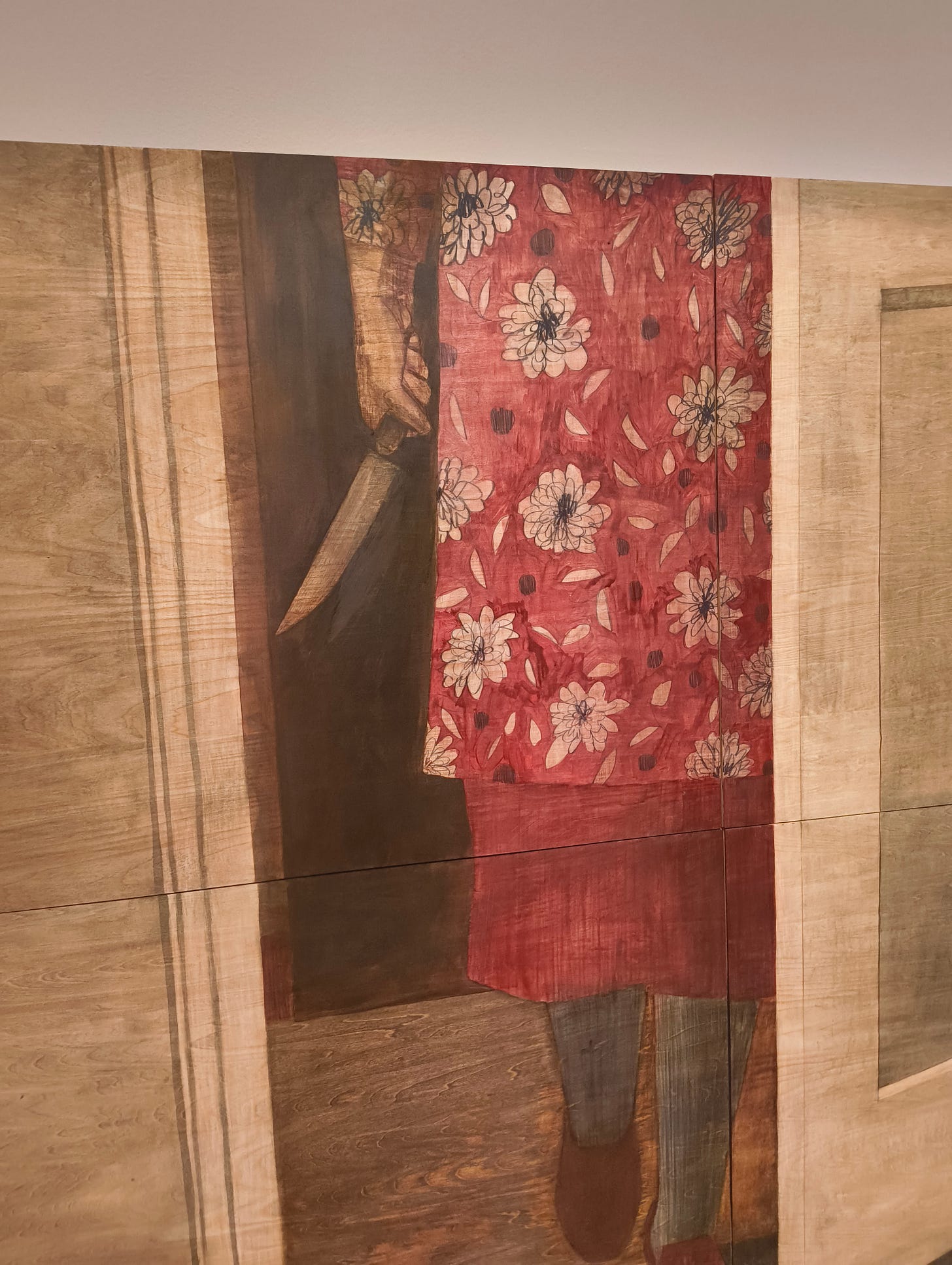Pamela Phatsimo Sunstrum – ‘It Will End in Tears’
19 September, 2024 – 5 January, 2025
Painting onto wood is a vibe. People didn’t really paint on canvas until around the 16th century – all of Hieronymus (or Jérôme, as the French call him) Bosch’s works are generally oil on oak, the same for Hans Memling’s ‘Last Judgement’ (one of my faves), while Cranach (the elder) often painted on beech. But it’s not often that you see a contemporary show as committed to reengaging with the practice as this.
Born in Botswana and now based in the Netherlands, ‘It Will End in Tears’ is the first solo exhibition at a major UK institution for multidisciplinary artist Pamela Phatsimo Sunstrum. And it’s a quiet triumph on ply. All presented directly on unfinished wood surfaces, Sunstrum’s lush yet restrained drawings and paintings offer up a cinematic experience which tells the story of ‘Bettina’, one of the artist’s cast of alter-egos.
The whole thing spins out of an imaginary twentieth-century town, loosely based on Sunstrum grandmother’s home in Botswana. But it speaks to her experiences of living in the United States and Asia too. Alongside the colonial themes, plenty of 20th century Hollywood is present in the film noir detectives, propeller aircraft, and the courtroom scenes with a hint of ‘Dancer in the Dark’ about them. There are also heady echoes of contemporary Asian cinema, like the soft lighting of Wong Kar Wai’s movies, or the eerie shots of cars at night, redolent of young Chinese director Bi Gan (pur-lease watch ‘Kaili Blues’ or ‘Long Day's Journey into Night’ if you don’t know what I’m talking about).
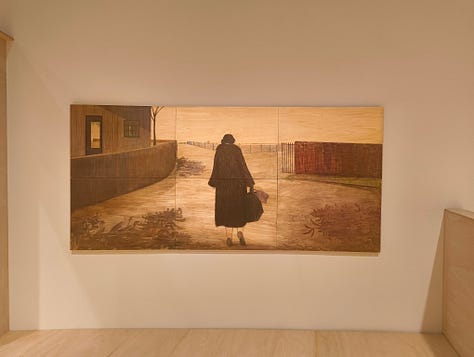
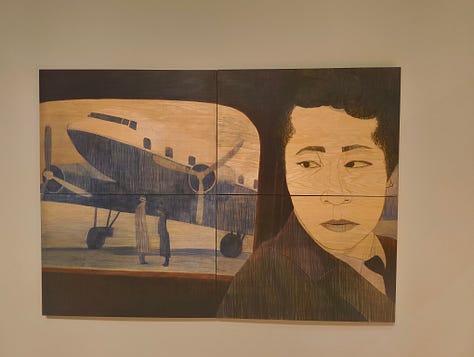
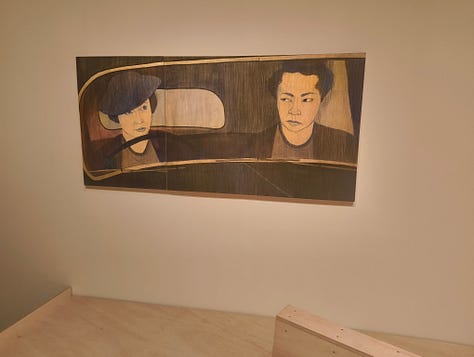
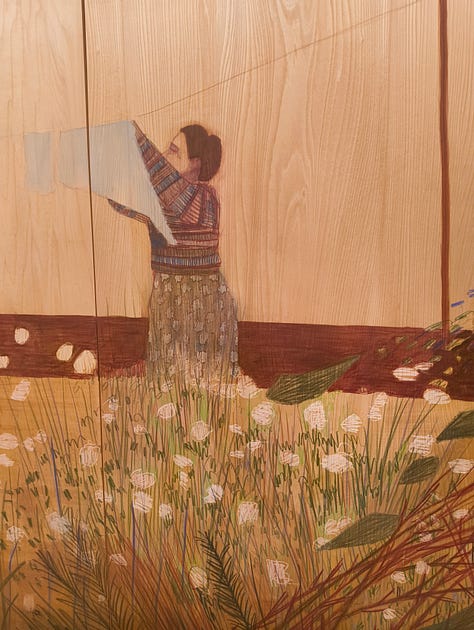
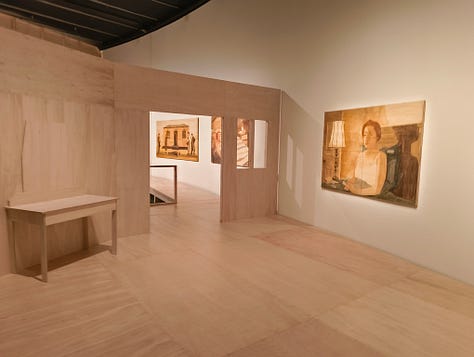
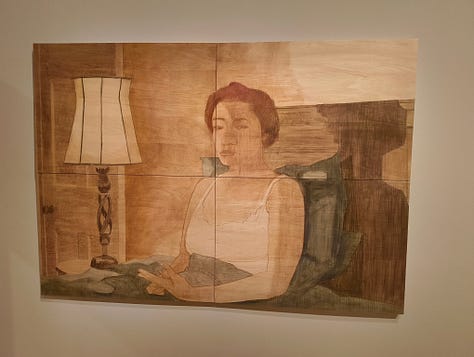
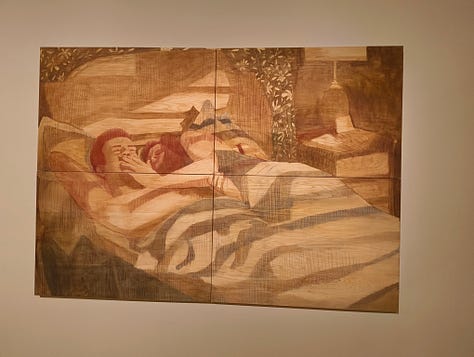
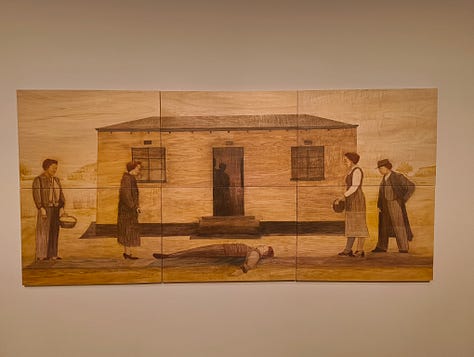
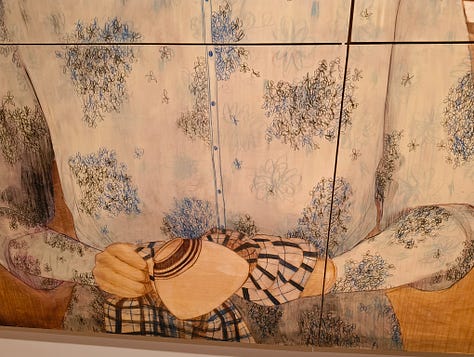
While the tableaux are cinematographically planned out in widescreen format, there’s also delicious detail up close, like the delicately knotted scrawls that make up the flowers on a print dress, or the abstract intersections of lines on a headscarf.
Sunstrum’s woman, her women, are at the heart of the narrative, in the quiet potency of shared glances, in the privacy and imprisonment of domestic spaces, in the cigarettes shared and solo, in the tea towels drying cups, in the kitchen knife in the hand. And throughout, the grain of the wood peeks through, both present and absent.
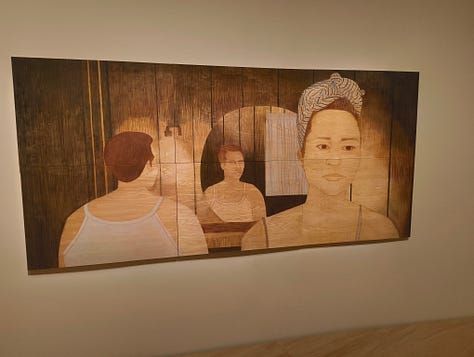
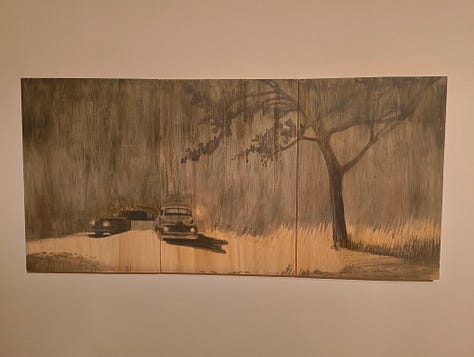
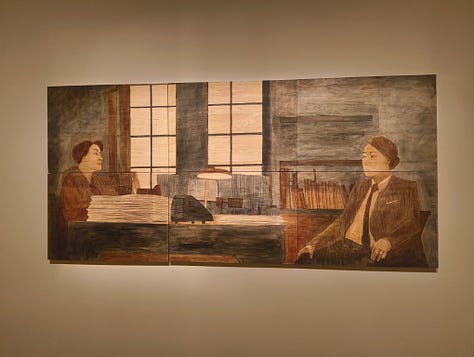
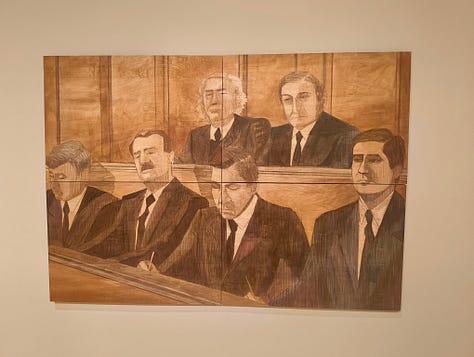
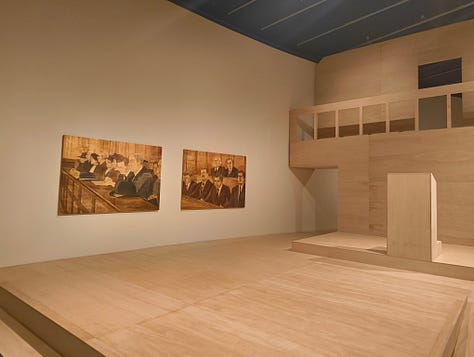
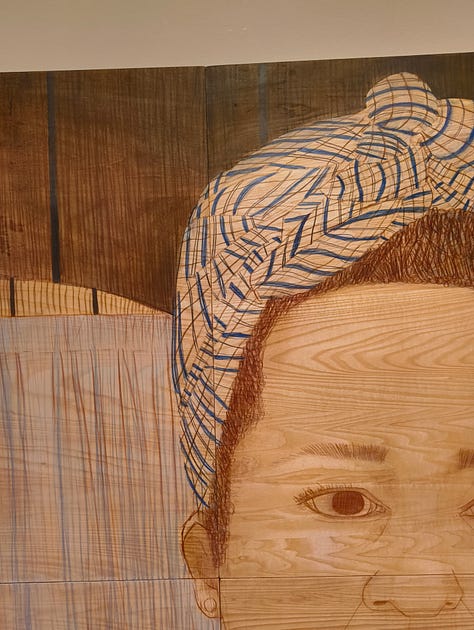
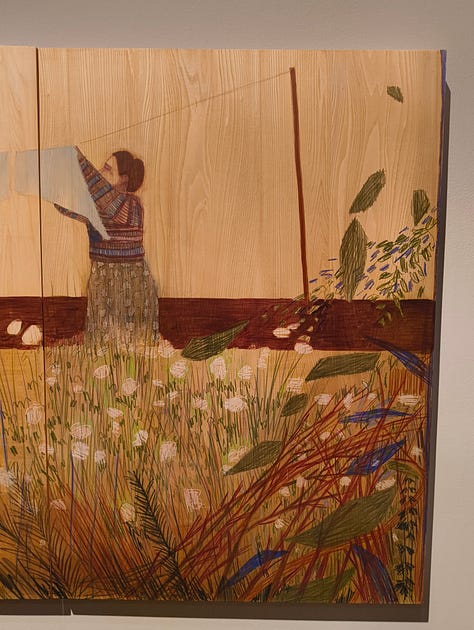
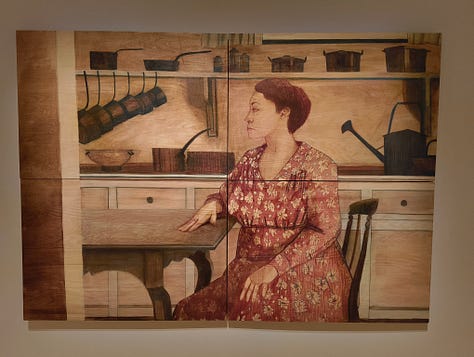
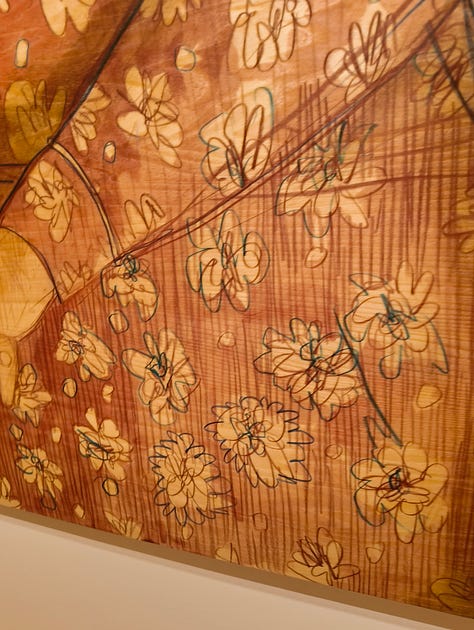
This is one of the best uses of The Curve’s space I’ve yet encountered. Alongside the works on the walls there are raised walkways, desks, lecterns, and benches crafted into the journey of the space, created in collaboration with artist Remco Osório Lobato. It’s all somehow laid back yet a bit extra, both lavish and makeshift, and designed like a blank, raw film or theatre set in itself. It’s an invitation to linger and pick your own narrative in whatever role you choose for yourself. Don’t miss it.

